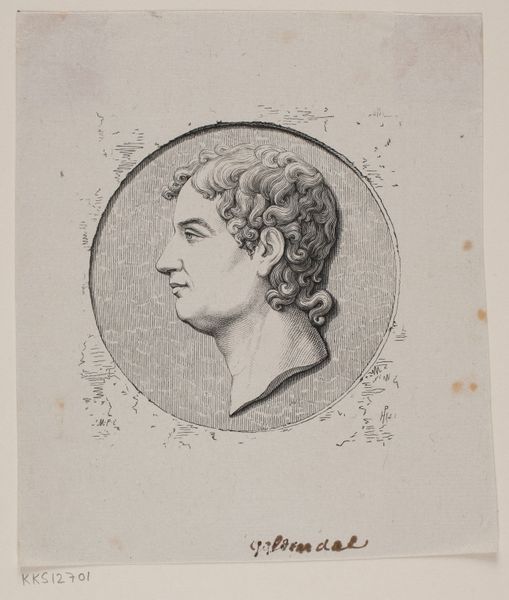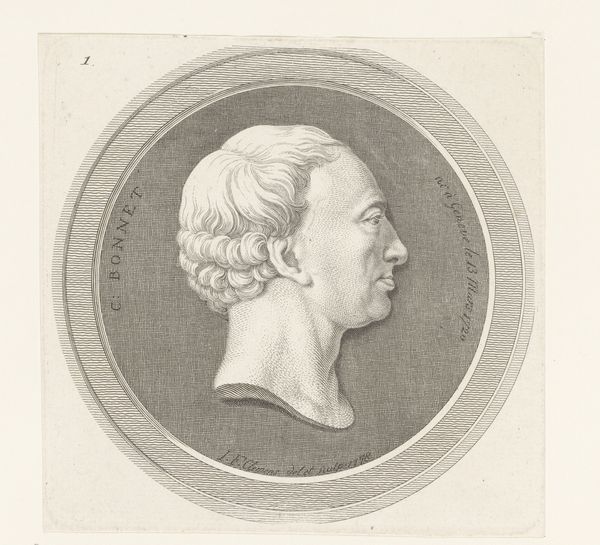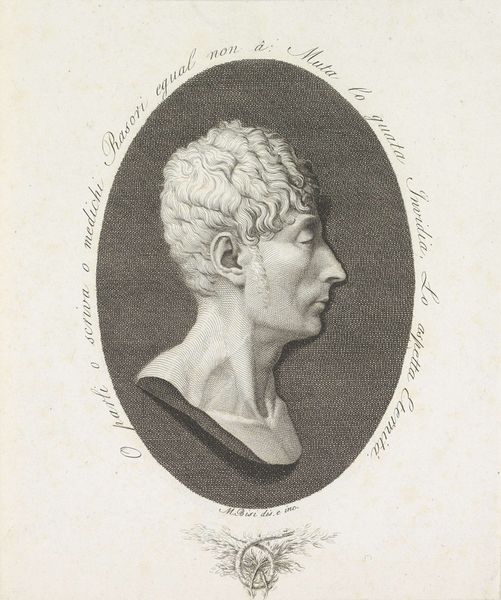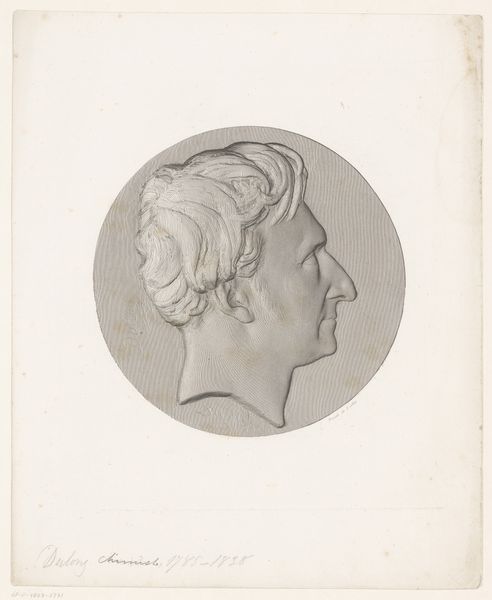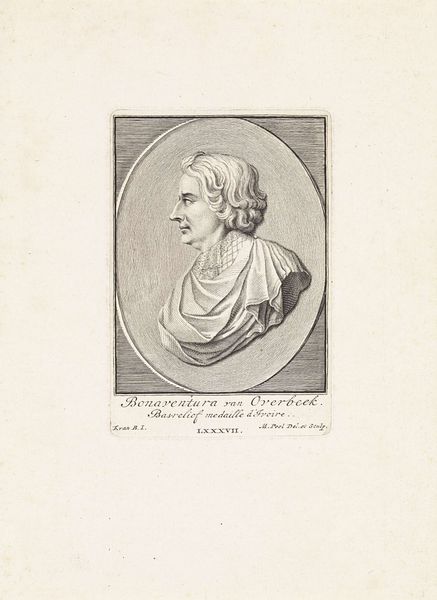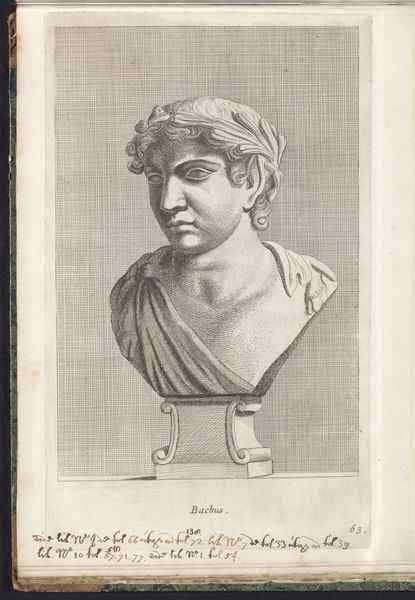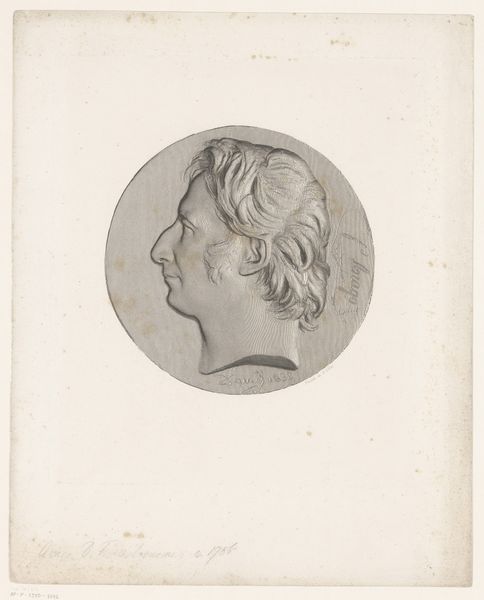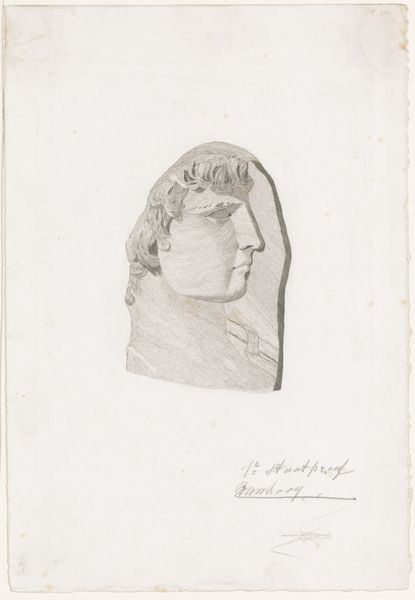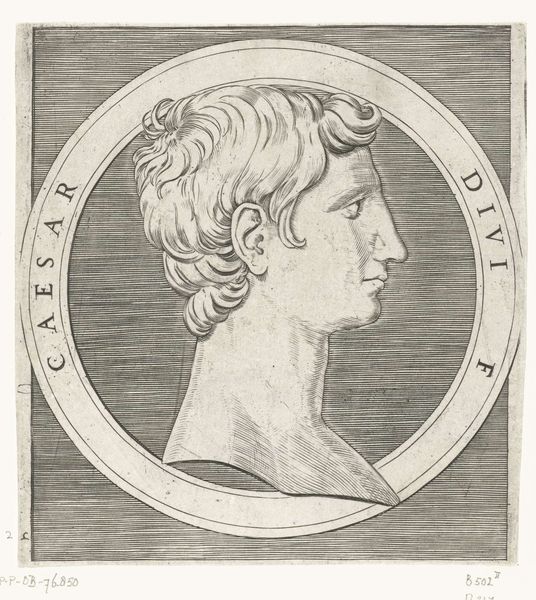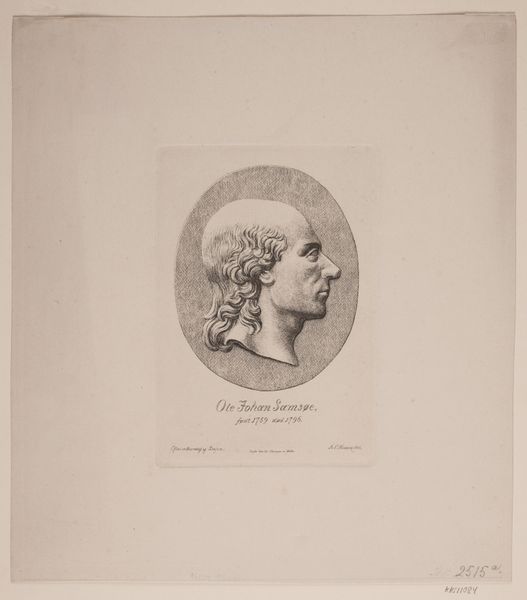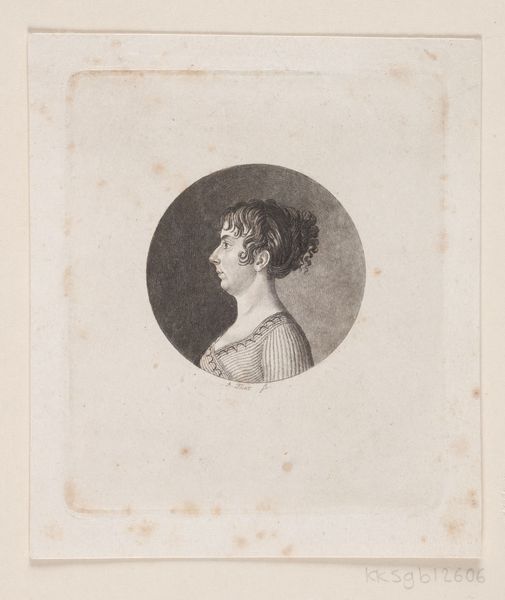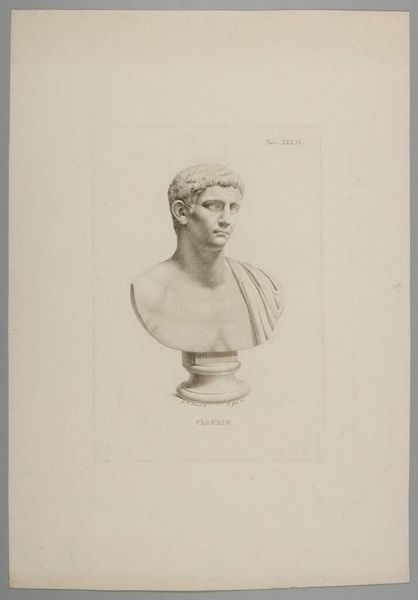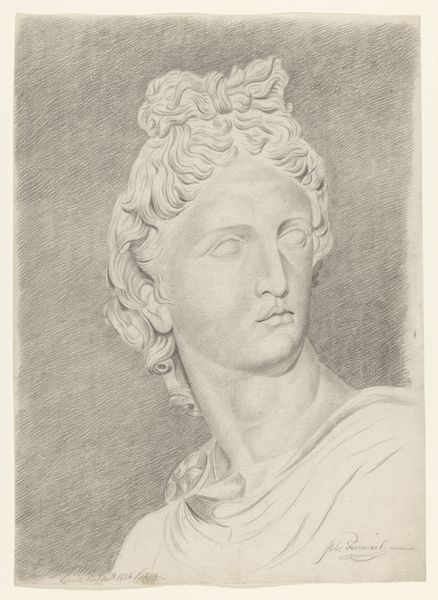
drawing, lithograph, print
#
portrait
#
drawing
#
neoclassicism
#
lithograph
# print
#
portrait reference
#
pencil drawing
#
portrait drawing
Dimensions: 252 mm (height) x 185 mm (width) (bladmaal)
Curator: This is a lithograph print entitled "Bertel Thorvaldsen," created sometime between 1806 and 1846. It resides here at the SMK, the National Gallery of Denmark. Editor: You know, the first thing that strikes me is how serene he looks. Almost like a classical statue rendered in the softest grays. There's a real calmness in that profile. Curator: Indeed. And this serenity ties directly into the Neoclassical movement that so heavily influenced art and culture at the time. Portraits, especially of prominent figures, were often idealized, presented as embodiments of reason and virtue. How do you read that intention based on what you see in this print? Editor: Well, looking at those flowing curls against the severity of his jawline creates a curious tension. Like he is romantic and formidable at the same time. It also makes me wonder who the intended audience was. Is this for public admiration, or a more personal commemoration? Curator: It’s worth considering both the public and the private spheres here. Lithography allowed for wider dissemination, making it more accessible than, say, a unique painted portrait. The emphasis on the subject’s stoic character would serve as an aspirational model to promote ideas central to nation building at the time. Think of ideas such as civic duty, stoicism and intellect. Editor: Absolutely. It’s so interesting how an image can both reflect and construct ideas around identity. Considering this was during a period of significant social and political change, I imagine these portraits were quite powerful. Curator: They absolutely were. And Thorvaldsen’s own identity is very relevant here, of course. He was a very celebrated Danish/Icelandic sculptor who spent most of his career in Rome. So to view his portraits in this light offers critical perspective in decolonization processes as they happen in the arts. Editor: This portrait seems deceptively simple at first glance, but peeling back those layers reveals just how rich and resonant it is. Curator: Precisely. By looking at "Bertel Thorvaldsen" within the nexus of art history, social context, and questions around identity and representation, we gain a richer appreciation for the portrait’s meaning and continued relevance.
Comments
No comments
Be the first to comment and join the conversation on the ultimate creative platform.
